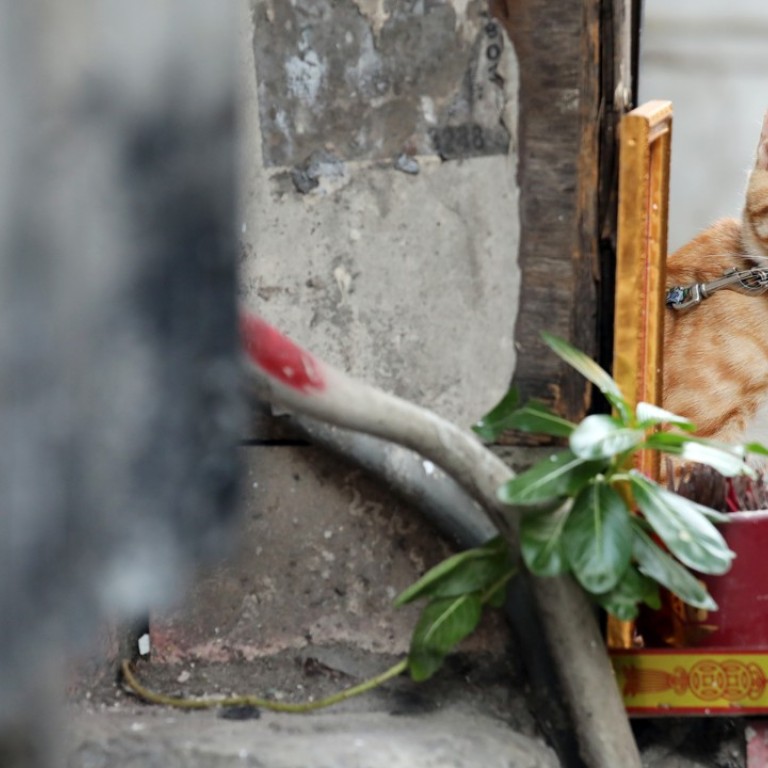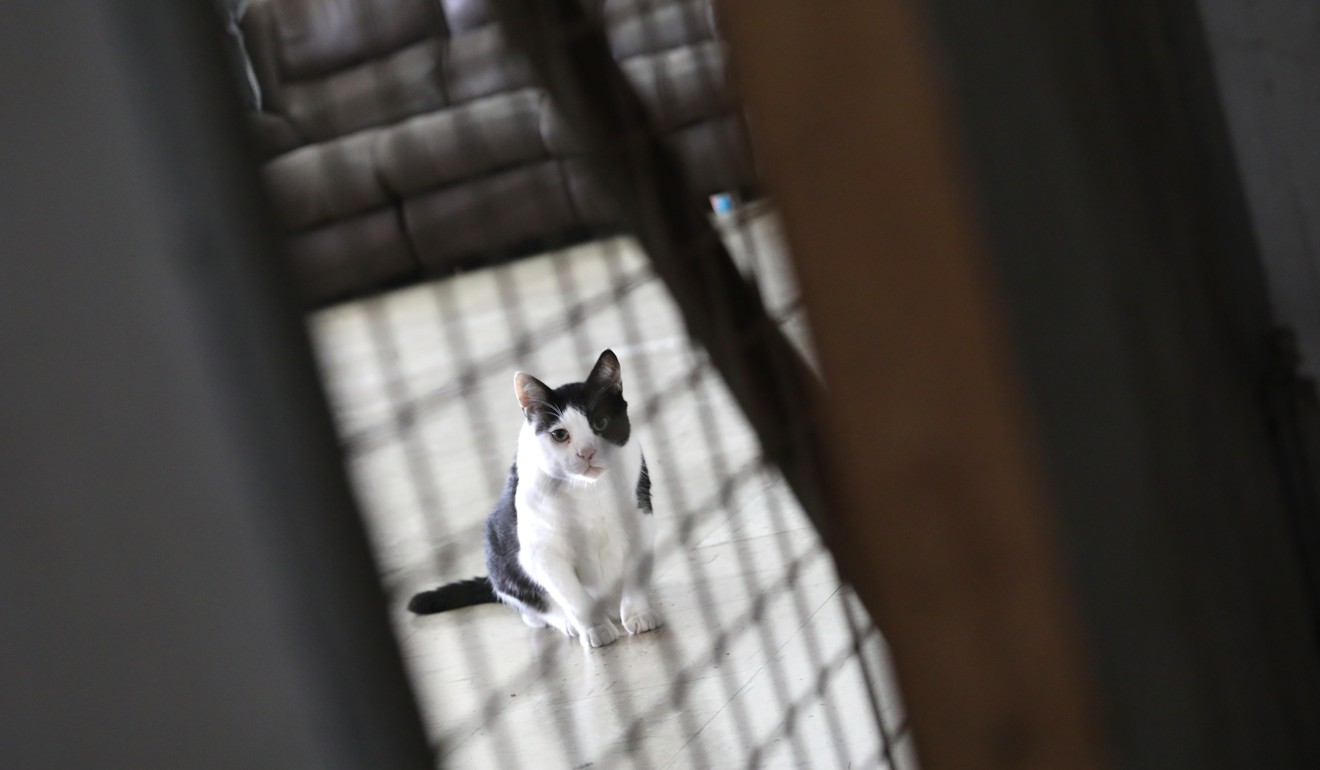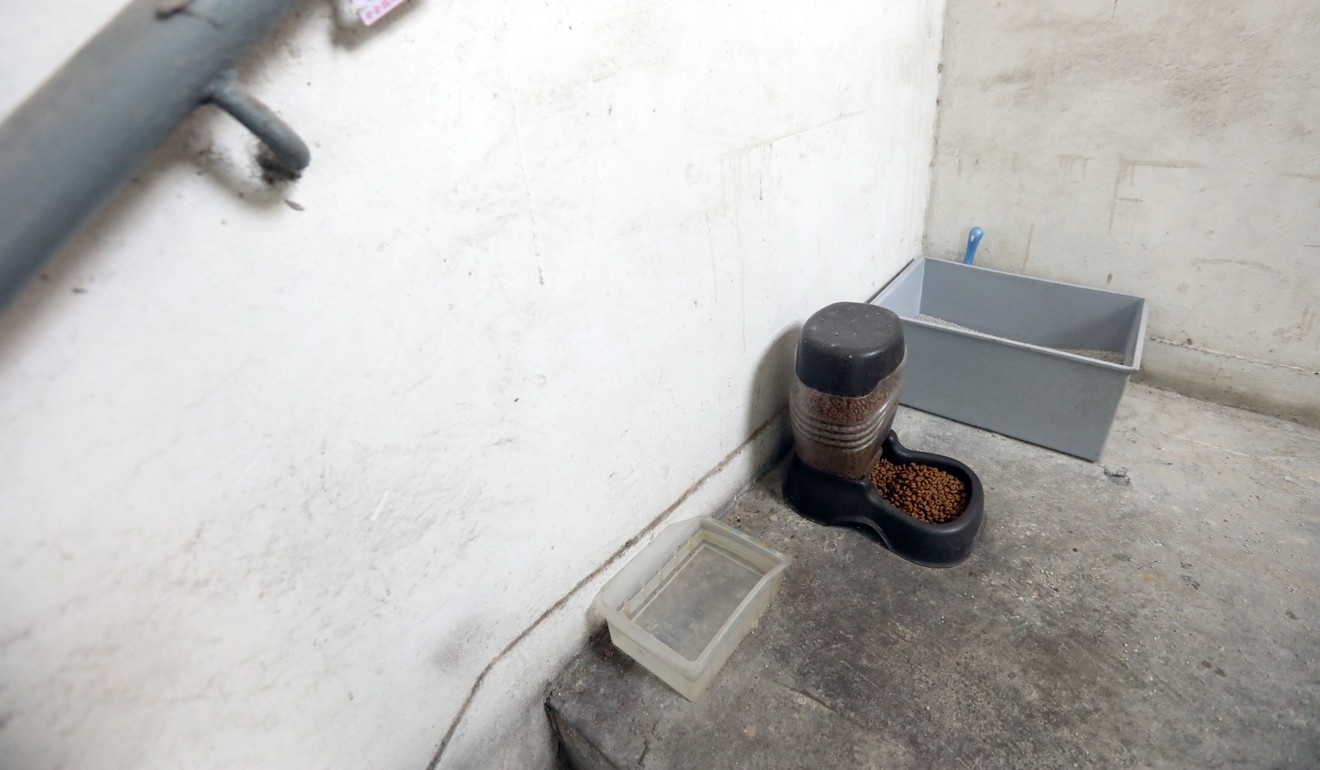
Hong Kong animal lovers on mission to save 50 cats abandoned in industrial building
- Many animals in east Kowloon neighbourhood facing similar fate, as more ageing buildings are set to be torn down, group says
- Volunteers seek more carers, adopters and resources such as food, litter boxes and towels
Large-scale redevelopment in the To Kwa Wan neighbourhood in east Kowloon has led to the abandonment of a large number of pets, with about 50 cats in one industrial building left struggling to survive, an animal lovers’ group says.
Many other animals were also facing the same fate in the area, where ageing buildings were set to be torn down, the group warned on Monday.
It said more than 50 cats had been living in poor conditions in a warehouse after they were left behind by owners who moved out with the premises to be demolished in two years.
“If we don’t rescue these cats, they may all die when the building is blocked up and demolished,” volunteer Anna Chan Suk-har said.
Chan recently started a Facebook group named “To Kwa Wan industrial building cat concern group” to appeal for public help.

“We’ve had no rest at all for the past few weeks, since cleaning the cats already takes three to four hours every day. But we really cannot see them die like this,” the group said on its Facebook page.
It called for more carers and adopters and said it would welcome resources such as food, litter boxes and towels for the rescue mission. Those interested can call 5247 9407 for more information.
With public cash, Hong Kong’s vet school prepares to nearly double intake
To Kwa Wan, an old urban neighbourhood in Kowloon City district, is undergoing rapid change with multiple redevelopment projects.
Construction is under way on the To Kwa Wan MTR station of the HK$97.1 billion Sha Tin-Central Link, the city’s most expensive rail project. Many ageing buildings are to be torn down by the Urban Renewal Authority to develop new private flats.

According to Chan, a couple surnamed Mo used to keep the cats. They first took two or three strays into their office a few years ago, but the cats, which they did not get sterilised, had kittens, and the problem began to multiply.
Cats now wandered all over the building, Chan said.

Together with three other volunteers, Chan caught 14 of the animals in the building’s corridors, staircases and balcony.
They sent 11 adult cats to be sterilised at the Society for the Prevention of Cruelty to Animals (SPCA).
Of the 14, four were adopted, two kittens were in a foster home, and the others were being kept at a temporary site rented by the volunteers, Chan said.
The volunteers estimated there were at least 30 more cats in need of rescue in the building, which Chan declined to identify due to fears the animals might be caught “by the wrong people” or put down.
Adopting dogs in need in Hong Kong is win-win for owners and pets
She first learned about the cat problem last month on Facebook, after a woman who worked in the building asked the public for help. As animal lovers, Chan and the other volunteers got in touch with the woman to coordinate rescue efforts.
They also post pictures of the cats on Facebook to help them find new owners. She urged more people to adopt the cats as the lease of the temporary site they rented to shelter the cats would expire in about a month, on January 8.
Individuals and organisations have reached out to the group to help these cats.

“Little Tiger has been adopted. I just took it to the adopter’s home,” Chan said, referring to a one-year-old rescued cat. She added that adopters were chosen carefully.
The group is now working with a local pet protection agency, Love Adopt Animal Society, to recruit more volunteers.
There were fears for many other cats in To Kwa Wan, as several buildings where they lived were to be demolished, said Chan, who called on groups such as the SPCA to offer help.
“Individual volunteers are unable to handle such a huge number of cats. We hope organisations can help. They have places and donations from the public,” she said.
Veteran animal welfare campaigner leaves Hong Kong after 40 years
Yeung Chun-yu, a district councillor based in To Kwa Wan, said he had heard about the homeless cats. A carer for stray animals himself, Yeung said the case showed how some animal lovers were forced to keep strays in industrial buildings because of the space and low rent. However, this could be against the lease, meaning there was a risk of eviction.
Yeung called on the government to devote more resources to protecting animal rights, such as providing funding and granting the use of brownfield sites – damaged and polluted farmland – to NGOs to operate centres for strays.
“This issue has to be taken seriously,” he said.
Yeung also urged animal lovers to comply with the terms of their leases and consider the future of their tenancy before taking in large numbers of animals.
Additional reporting by Shirley Zhao


